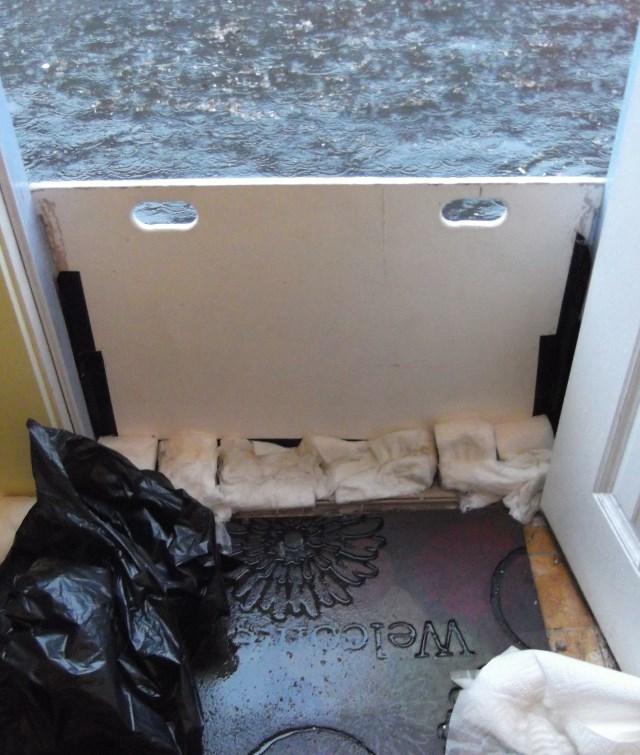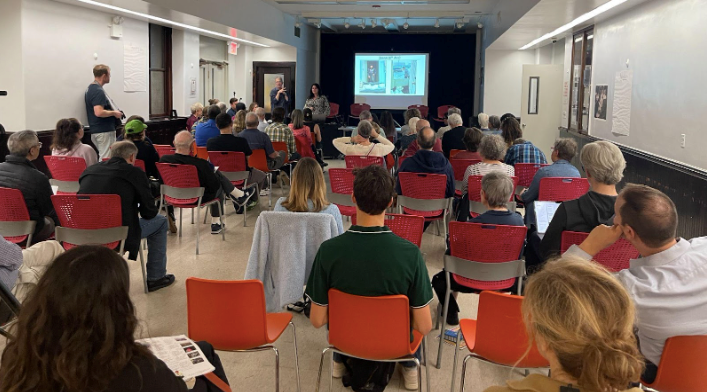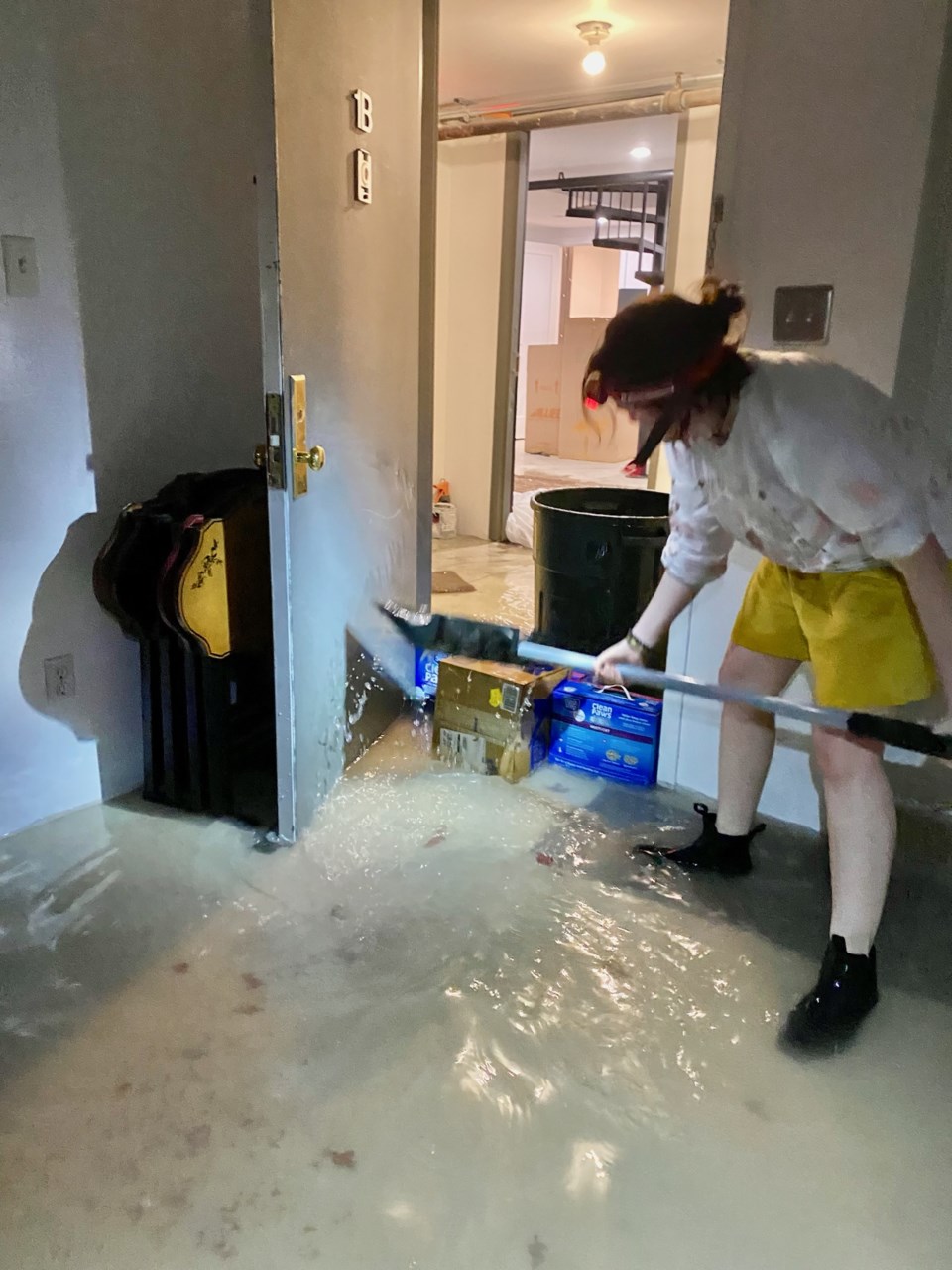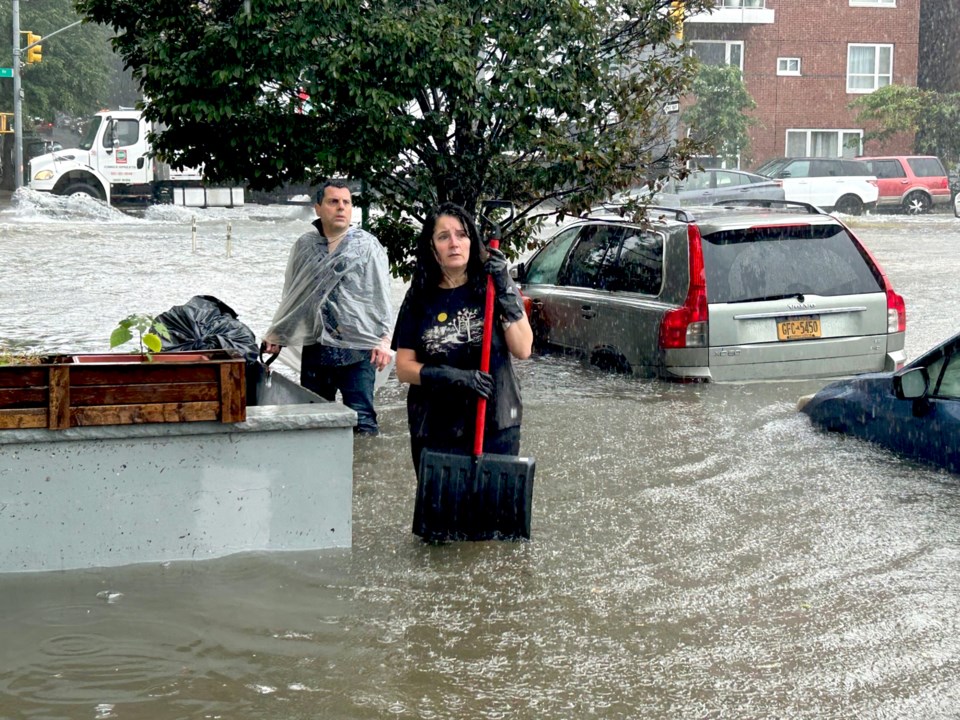With a few weeks left before the end of the hurricane season, Brooklyn residents are taking flood mitigation into their own hands.
Joann Amitrano, a homeowner in low-lying Gowanus, uses waterproof boards and duct tape to create a makeshift dam for her front door during heavy rains. Amitrano was one of the many Gowanus and Park Slope residents who shared her strategies at an October community meeting Flooding Water Connects Us, organized by Nick Nyhan, founder of The City Sponge, a volunteer flood initiative.
“What I’ve realized is how much people want to talk about it…I just want people to feel empowered as opposed to hopeless,” Nyhan said.

Attendees listened to Amitrano’s DIY tricks as they shook their heads in disbelief at the images of submerged cars.
“This is way beyond a little flood,” said Amitrano.
Park Slope resident Brit Worgan, who has faced persistent water damage in her first-floor duplex since 2021, has spent thousands on flood prevention as a result of heavy rain entering the cellar and sewer overflows from the toilet.
Worgan’s arsenal includes sandbags, a wet/dry vacuum, and water sensors.

"It’s risky to block entryways during emergencies, but it seems to be our only option," said the 38-year-old photographer, who also combats mold with industrial fans and dehumidifiers.
Worgan said she has invested $3,500 to $5,000 in appliances, supplies and tools to figure out how to stop the deluge of water. So far, she has purchased wet/dry vacuum, sandbags, rubber boots, gloves, masks and water sensors.
The night before a rainstorm, Worgan places the sandbags in entryways and around the toilet.
To combat past mold issues from floods, she sets up an industrial fan and humidifier.

Council Member Shahana Hanif, who attended the October meeting, told over 40 constituents that they can expect change. The first of three phases of a $200 million rezoning project to restore the sewer system is underway in Gowanus. This phase, which is being implemented on 7th Street between Third and Fourth Avenues, is set to increase the capacity of the sewers by 78%.
Park Slope and Gowanus share a sewer system, so wastewater and stormwater from the two locales flow through the same pipes. With climate change, erratic bouts of rainfall have resulted in worsening urban floods in this area of Brooklyn, she said.
“When basements and yards flood in Park Slope, the water flows downhill into Gowanus, and when Gowanus experiences flooding and the water table rises, it creates a ripple effect upstream,” Hanif said.
Sam Robinson, co-owner of Field Form, a Brooklyn-based landscape and design business, highlighted a new initiative called The Flood Club, which gathers neighbors, clients, friends and industry partners to talk about design and infrastructural interventions to capture, move and stop water.
Field Form offers 15 solutions, which include setting up a rain garden to absorb rainwater but also more complex approaches like a subground water storage to alleviate the pressure on sewer systems during floods.
“A lot more people seem open to the idea of basically diverting water from their rooftops and allowing it to be infiltrated into a catchment area in the back garden,” Robinson said.
The starting price for the company’s on-site flood mitigation products range between $10,000 to $15,000, with installation ranging from one to three weeks.
Despite the challenges, Nyhan found a silver lining: “Flooding connects people who don’t normally connect.”
To learn more about the next meeting, click here.




